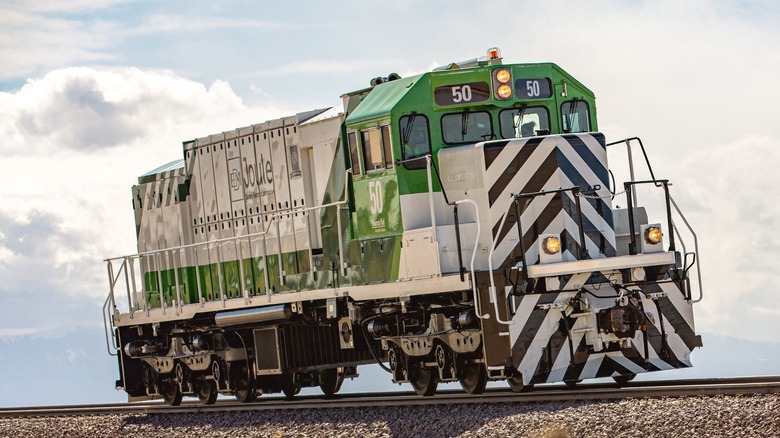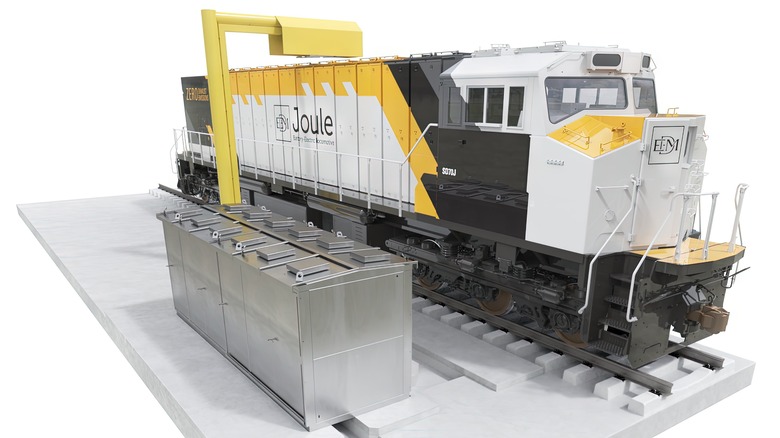World's Largest Battery-Powered Locomotives Launched By Progress Rail
Locomotives powered by electricity have been around for over a century, with rail lines like the now-defunct Pennsylvania Rail Road starting electric operations as early as 1905. However, the average electric Amtrak passenger train or subway you may see gets its power from either overhead power lines or an electrified rail system. Battery-electric locomotives, meaning locomotives that are powered by onboard batteries instead of relying on external sources, are still at the bleeding edge of electrification.
Enter Caterpillar Subsidiary Progress Rail's EMD (Electro-Motive Division) Joule line of locomotives delivered earlier this year. According to Progress Rail, the Joule is the very first of its kind in North American rail operations. EMD Joule locomotives also make up some of the largest (and heaviest) battery-powered vehicles in production today. Contrary to electric vehicle companies like Polestar which use wacky design principles, Progress Rail's Joules are not avante-garde spaceships. The first production Joule, the SD40JR doesn't even have a catchy name and looks nearly identical to its diesel-powered counterpart, albeit without the fuel tanks.
An EV for the railroad
As of now, Progress Rail has not released exact range figures for the Joule line as the only completed models are meant for local switching duty. Such a locomotive wouldn't leave the rail yard for any extended period of time during its normal daily routine, so a range figure isn't as important as calculating the number of hours it can run. However, it advertises the battery capacity as anywhere from 2.4 megawatt-hours to 14.5 megawatt-hours on the upcoming SD70J-BB. For some perspective, a 14.5 megawatt-hour battery has over 72 times the capacity as the battery in Cadillac's massive IQ EV.
With all that capacity comes a lot of weight. The aforementioned SD70J-BB weighs an astonishing 540,000 pounds. The SH40JR that Progress Rail has been delivering to customers weighs 353,000 pounds. In the automotive world, the cartoonishly heavy GMC Hummer EV weighs "just" 9,640 with all of its battery heft. For speed, the EV locomotives top out at 75 miles per hour for the SD70J and 50 miles per hour for the rest of the line, meaning that most of the line is not quite suited for full-fledged freight operation as of yet. Diesel-powered locomotives typically top out at over 60 miles per hour.
Charging such a beast is accomplished in two ways: regenerative braking which captures energy from braking and feeds it back into the battery and via Progress Rail's "reverse pantograph" system that allows operators to park under a charger and charge the battery. The 500kw charger that the first Joule customer, the Pacific Harbor Line in California, uses can charge a locomotive fully in four hours.

